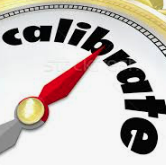
Ten-Point Checklist for Calibration Services
• Use an accredited laboratory: Accredited labs are required in many industries and must undergo regular technical audits. They also have publicly available "scopes of accreditation."
• Check if the lab's capability is acceptable: The scope of accreditation lists what the lab is accredited to calibrate, over what range, and their calibration measurement capability (CMC).
• Define tolerance limits: End-users can define their own tolerance limits, which can be compared to the lab's CMC to determine the Test Uncertainty Ratio (TUR).
• Request a statement of conformity: Discounted calibrations often mean less rigorous methods, increasing customer risk.
• Request as-found results: These results determine the stability of measuring equipment over time and adjust the calibration interval.
• Request adjustments and maintenance: Customers should request adjustments and maintenance as needed, as the international definition of calibration does not include these aspects.
• Request an accredited certificate: Non-accredited certificates from accredited labs are the same as using a calibration provider that is not accredited.
• Define rules for calibration labels: Organizations may have their own internal rules, which can lead to different expectations for a new calibration label.




